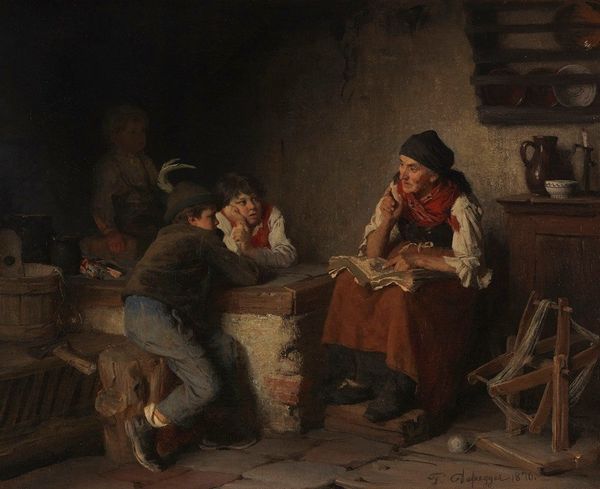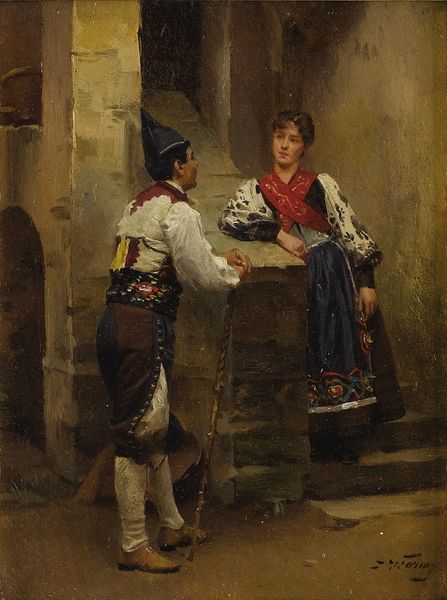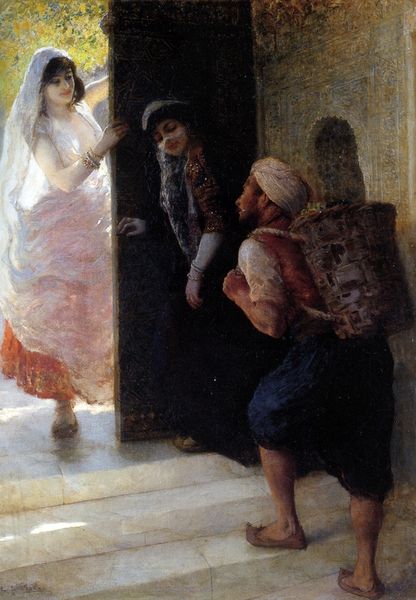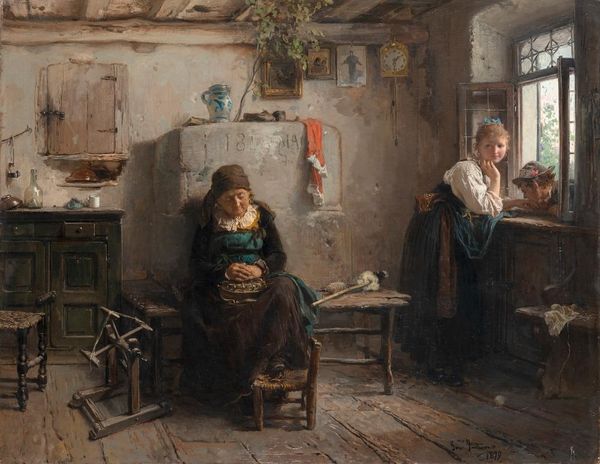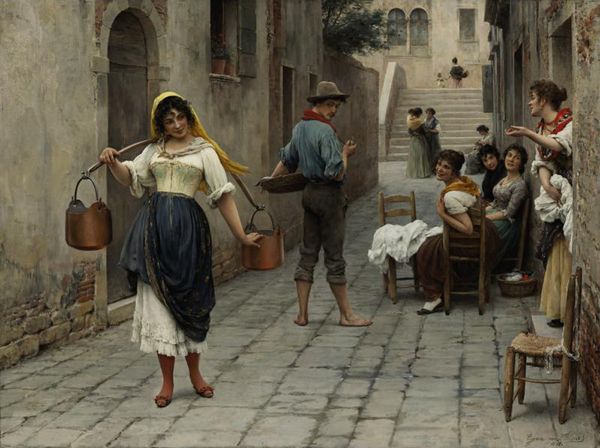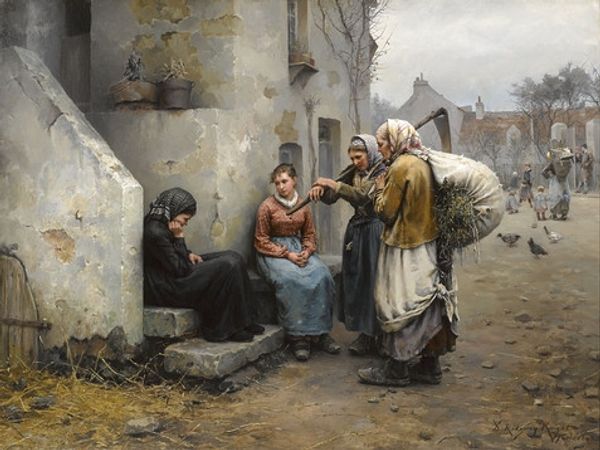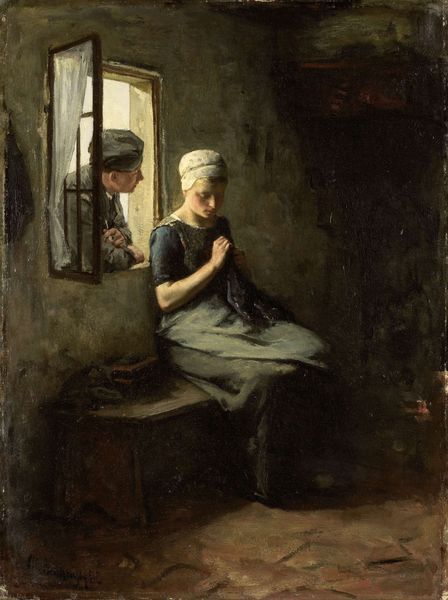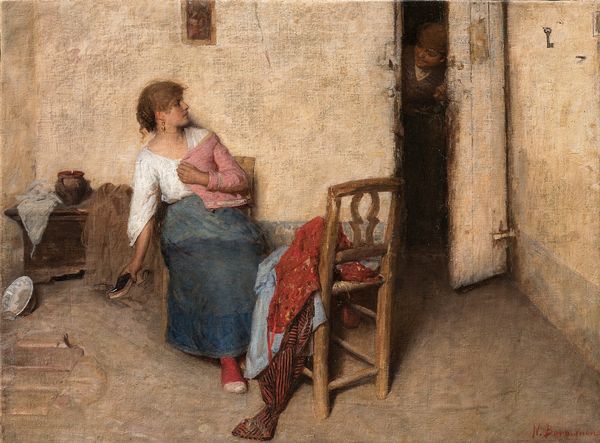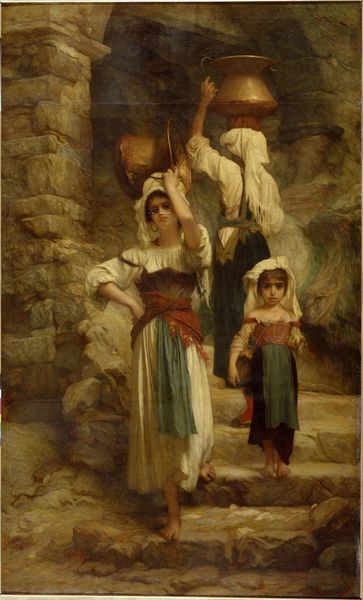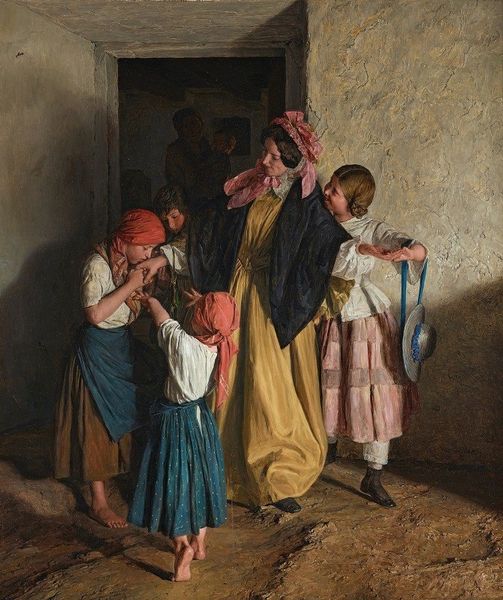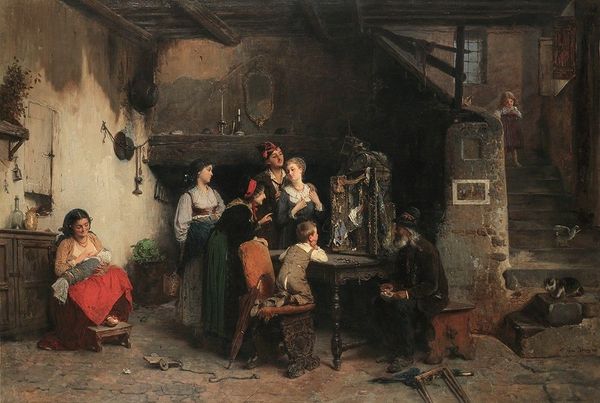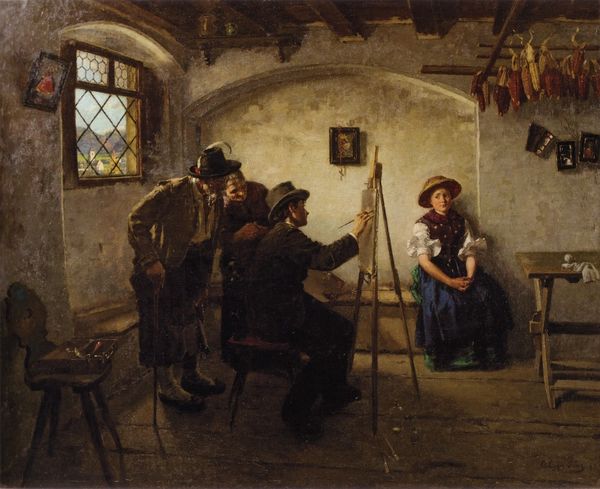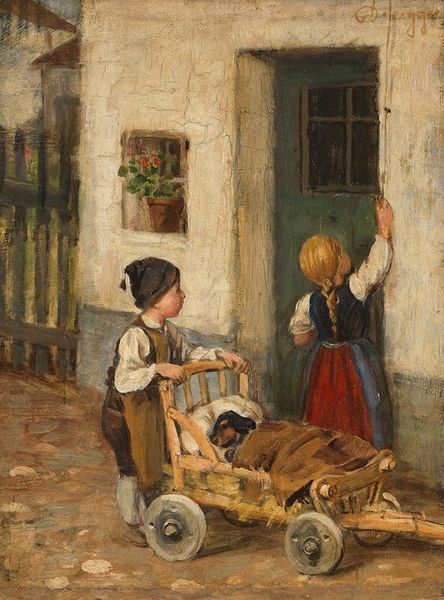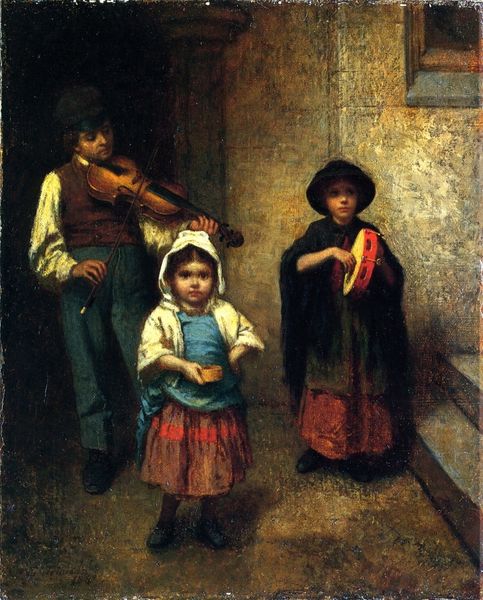
Dimensions: 51 x 65 cm
Copyright: Public domain
Curator: Gerolamo Induno's 1871 painting, "The Desperate Mother," immediately strikes a somber chord, doesn't it? The dim lighting and anxious faces evoke a palpable sense of urgency. Editor: It certainly does. Structurally, the stark contrast between the dark tunnel and the illuminated doorway is compelling. The artist’s employment of impasto adds depth to the figures, almost as if they are emerging from the canvas itself. Curator: Beyond technique, consider the social narrative. Induno paints what seems like a plea for help. A mother, carrying a sick child, and a second, younger girl imploring at a door, perhaps seeking medical attention, judging by the placard on the wall. Genre paintings like this offer valuable insight into 19th-century social structures and the desperation of the lower classes. Editor: True. But what is most impactful is the way the subjects command an embodied response. See the angle of the light, how it renders depth? How the vertical alignment, the mother's head to the door knocker directs our attention to a formal reading about poverty in post-unification Italy. The costuming of the subjects speaks to an essentialist interpretation of folk identity, albeit rendered with sentimental intention. Curator: The sentimentality aligns with the Romanticism of the period. But one cannot ignore the socioeconomic commentary woven into the scene. The clear desperation speaks volumes about limited healthcare accessibility for lower-class families in this era, no? Induno, perhaps, hoped to stir social awareness or even prompt societal reform through visual storytelling. Editor: Induno presents a window, but the window's shape, size, and clarity are prefigured by structural and political assumptions. But what does it reveal to us? By calling attention to form, a type of order can be placed on even disorder. Curator: I find that thought particularly resonant. It calls us to acknowledge the complex relationship between artistic choices and broader socio-political issues. Editor: Agreed. It demonstrates how formal decisions within art are invariably entwined with power structures. Curator: Food for thought. Editor: Indeed.
Comments
No comments
Be the first to comment and join the conversation on the ultimate creative platform.
